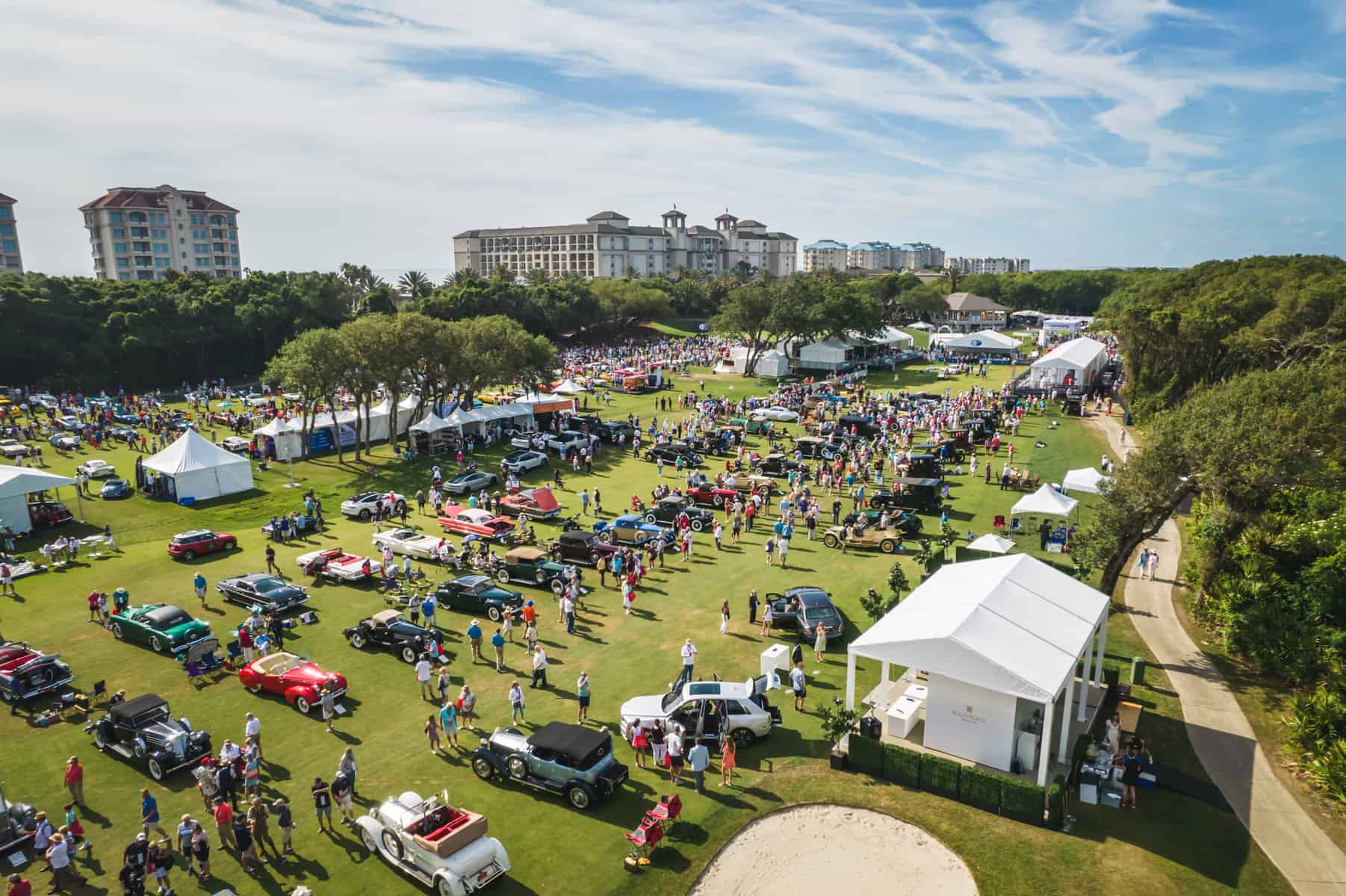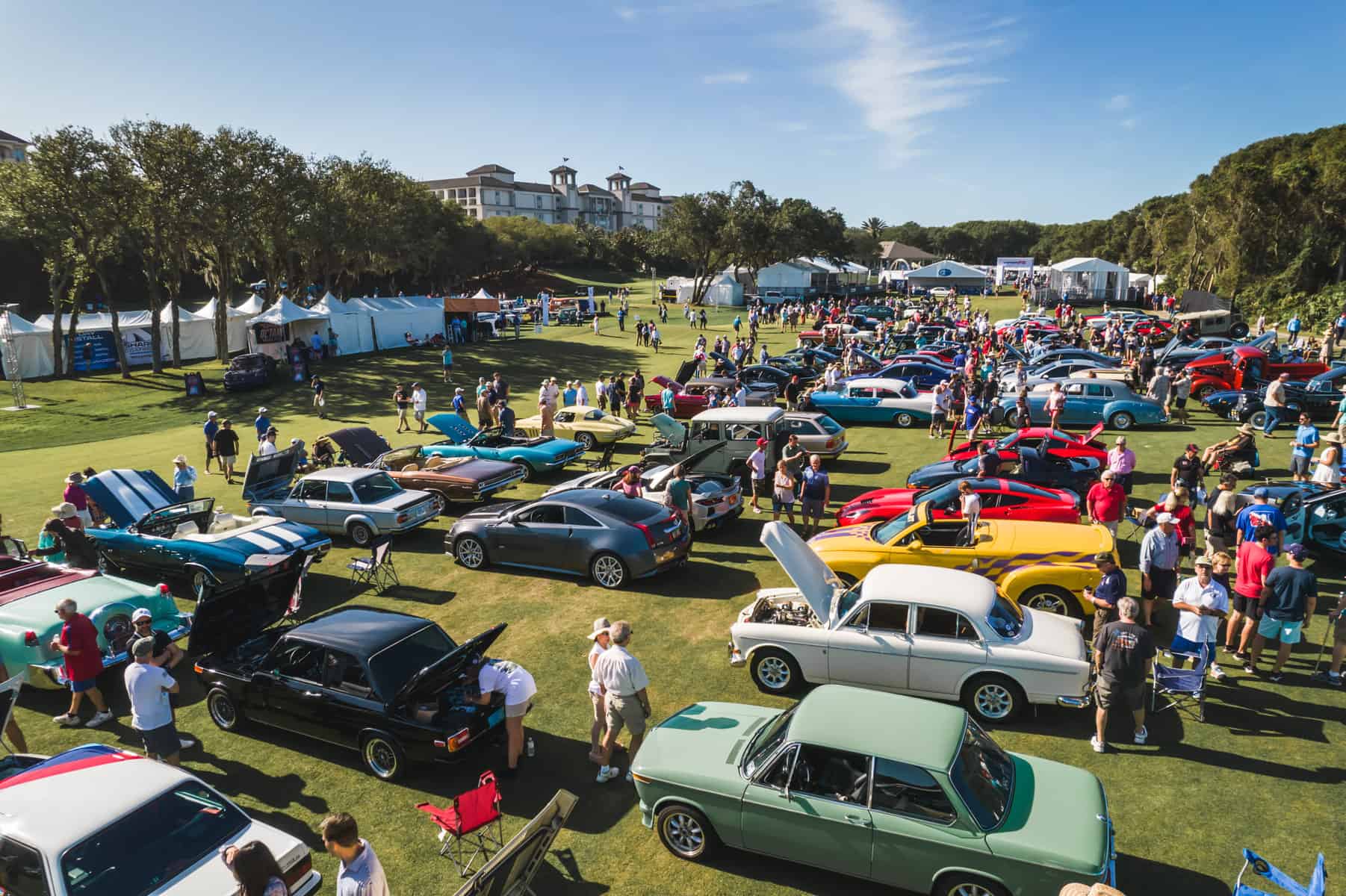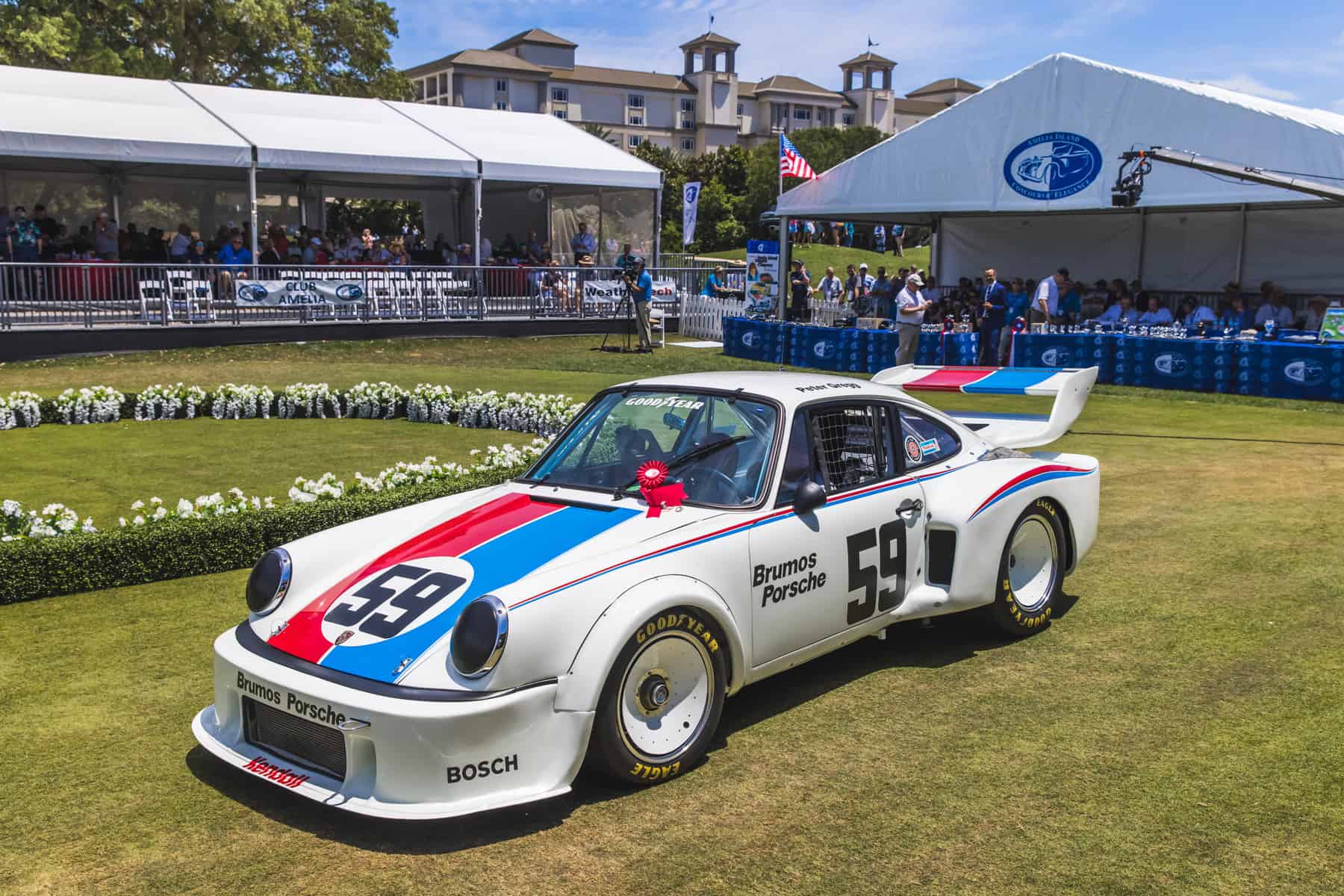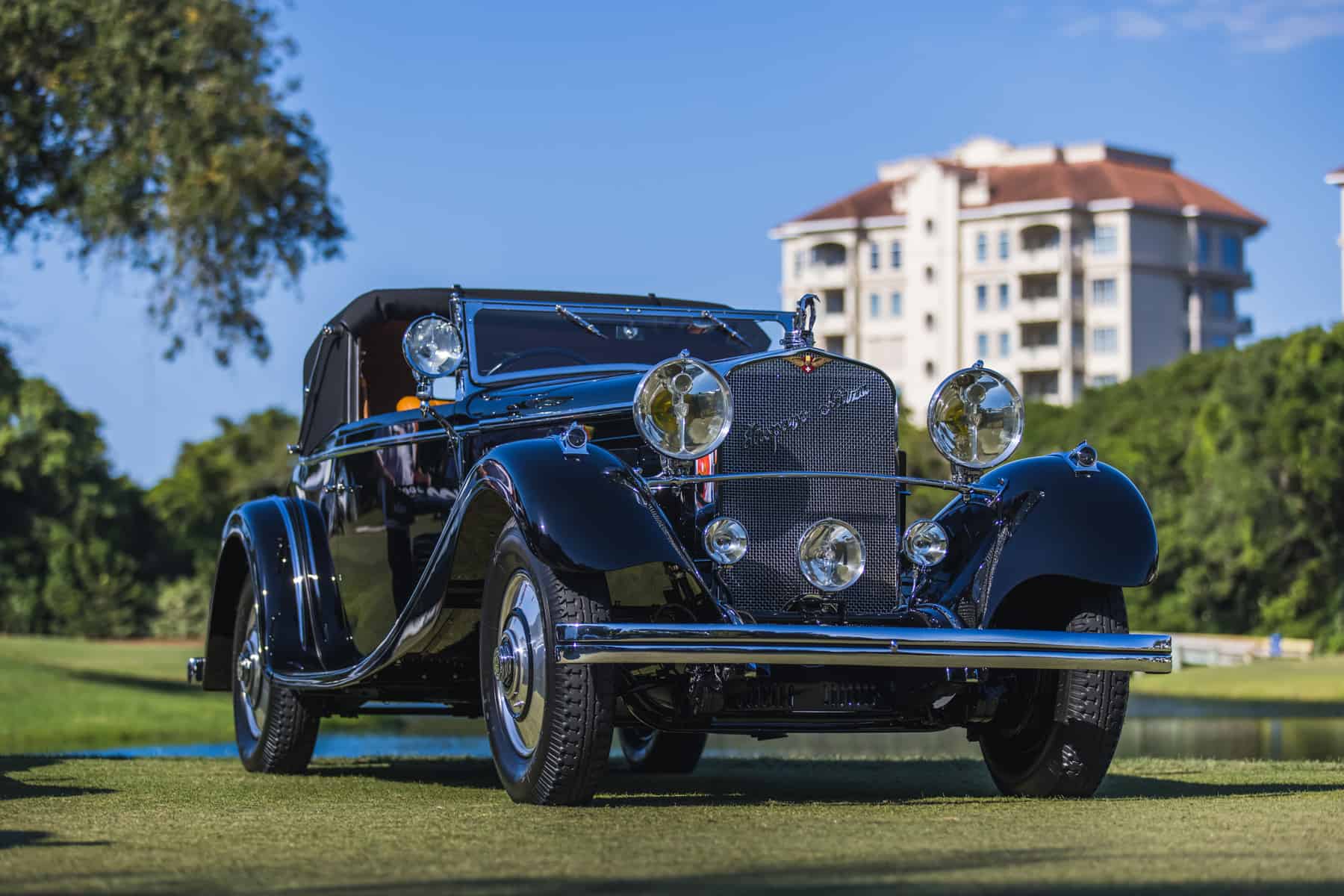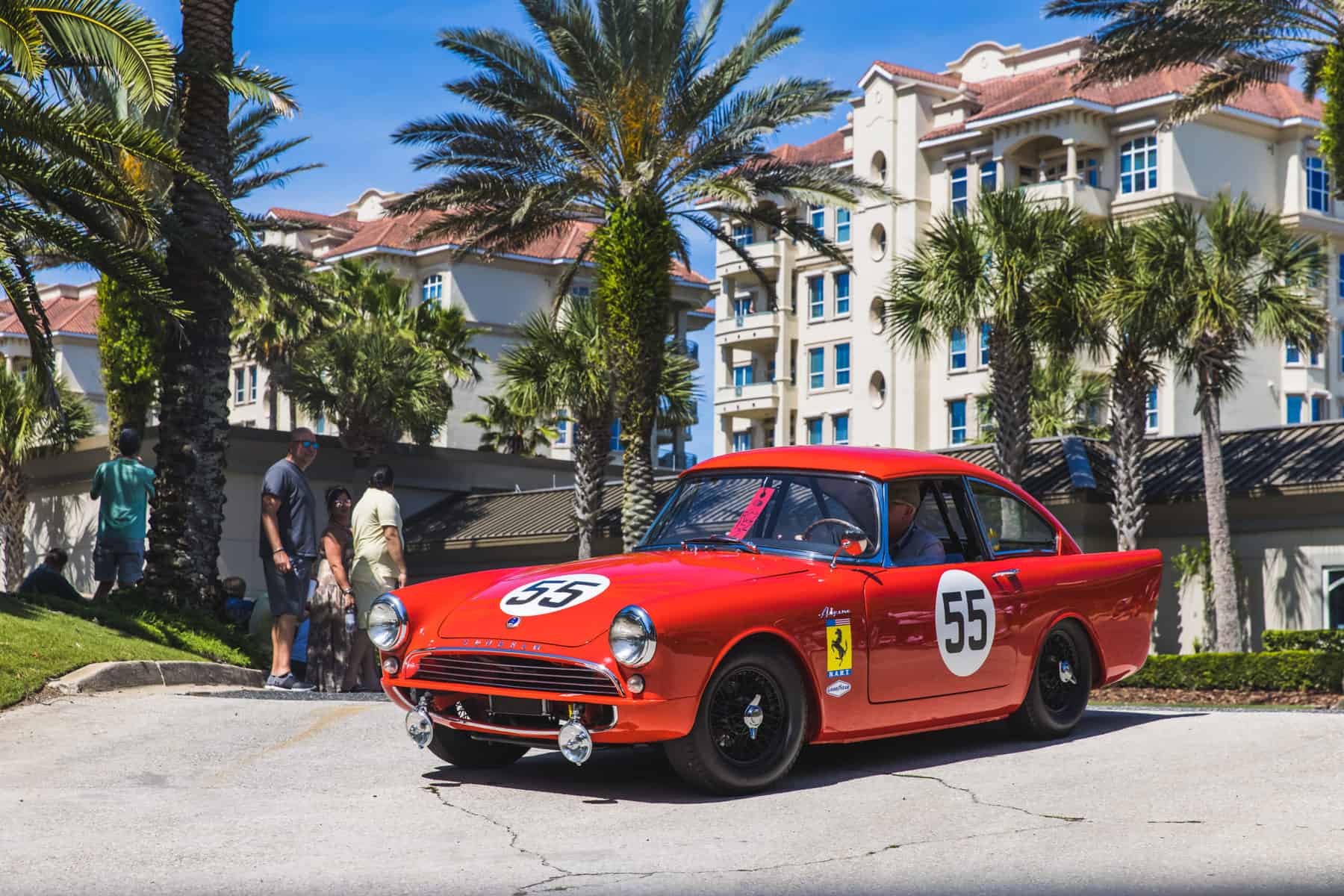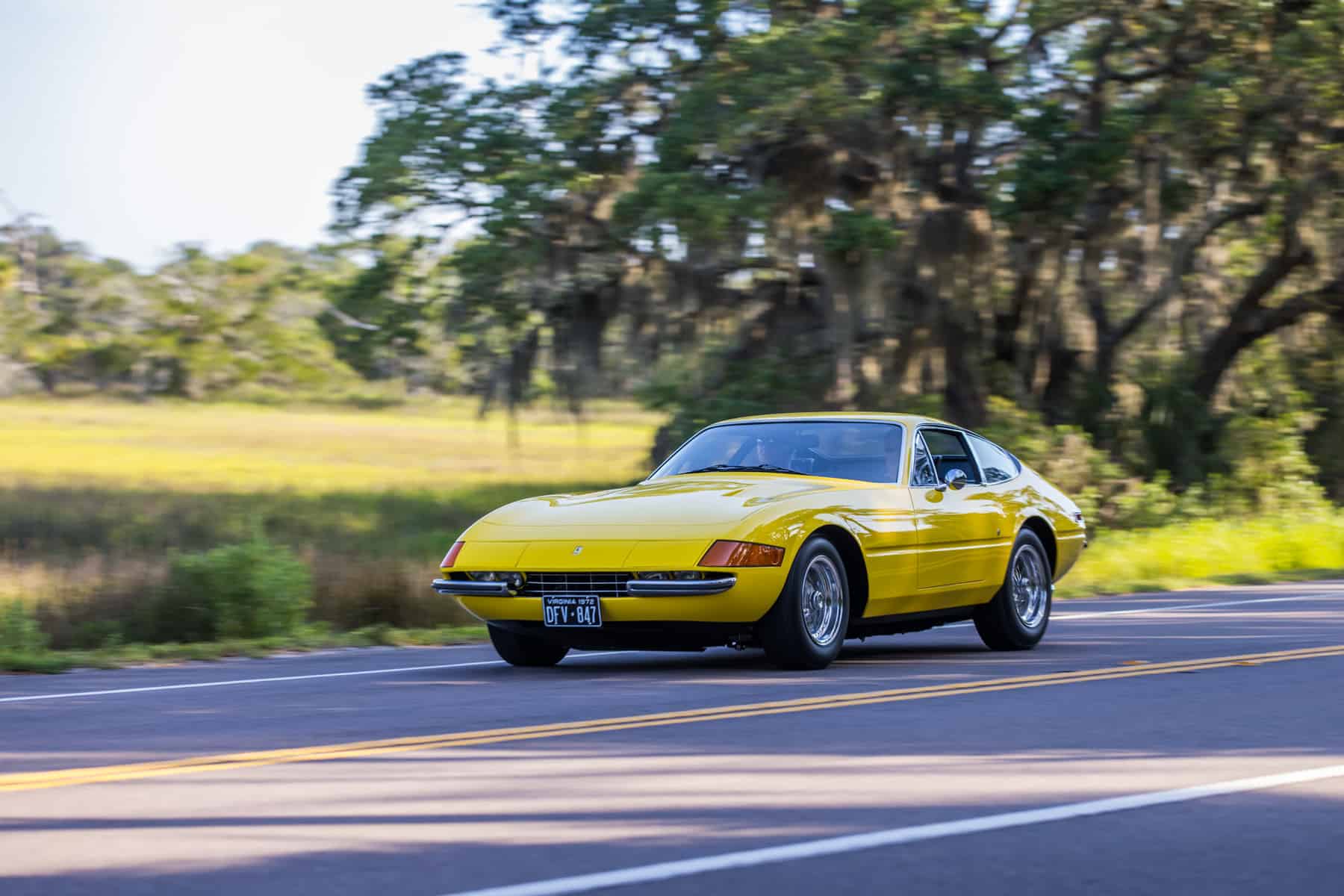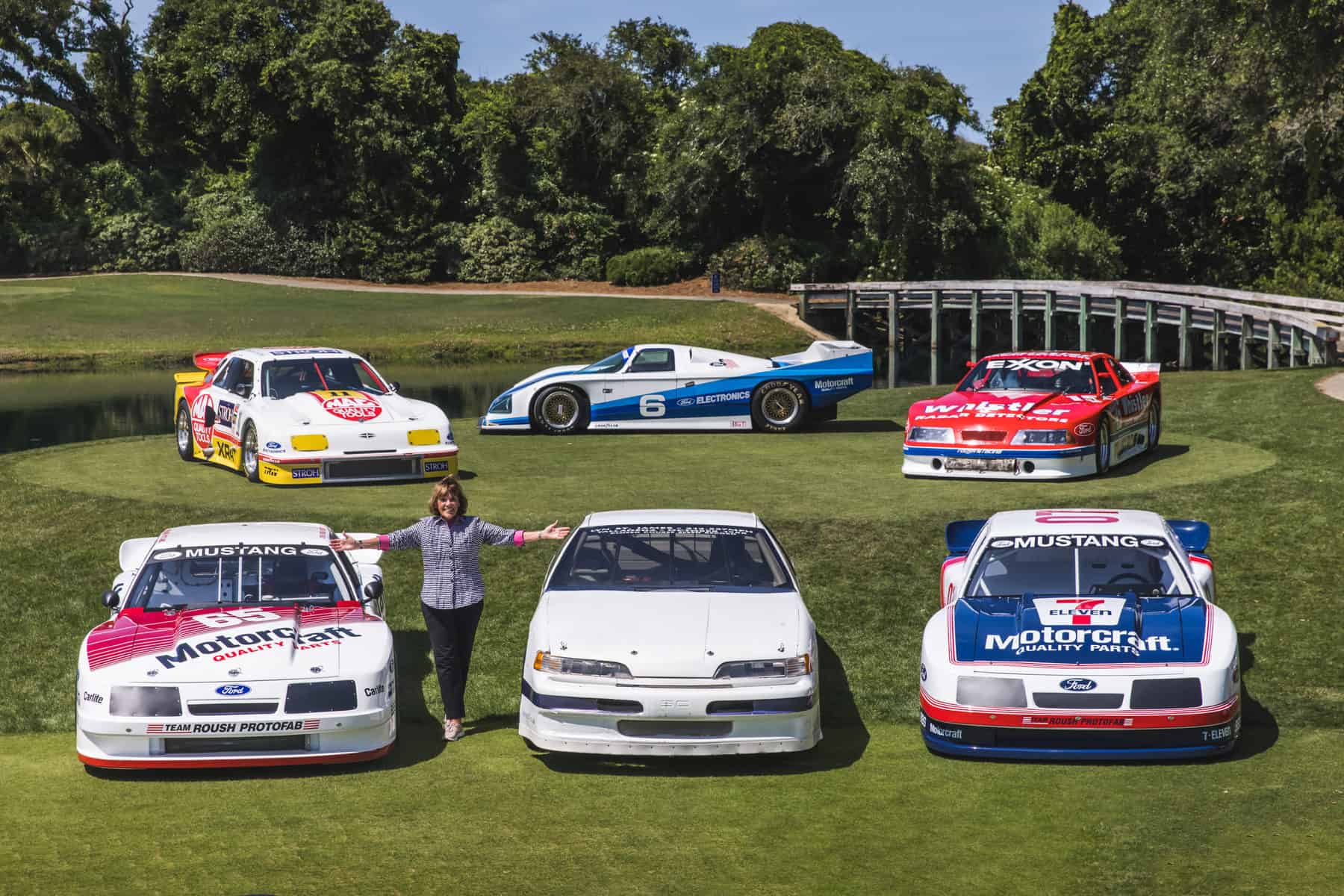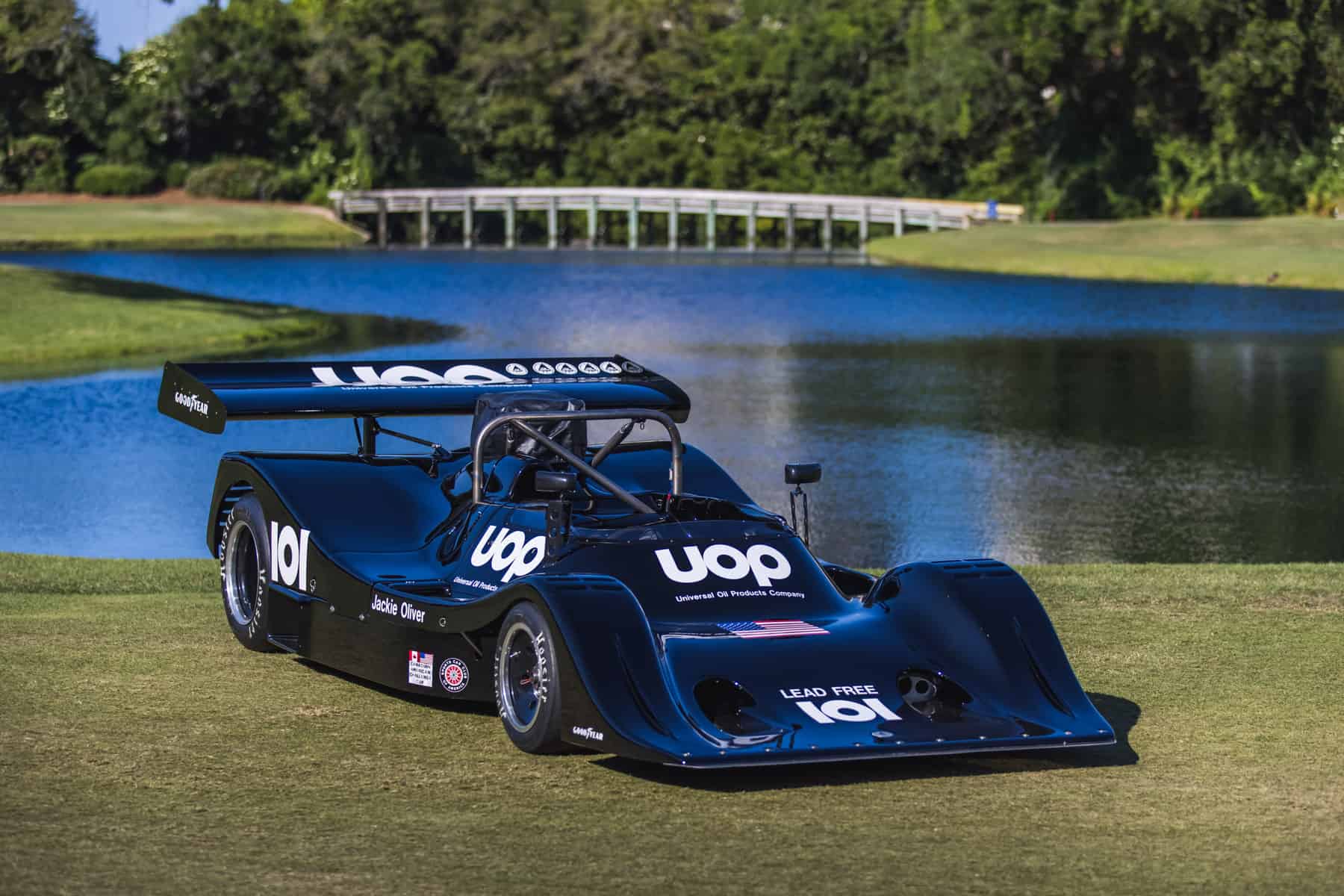Amelia Island Concours d’Elegance 2021
One more look at a very special weekend
BY: BILL ROTHERMEL, SAH
LEAD PHOTO: DEREMER STUDIOS
Now that Amelia Island 2021 is in the books, I suspect Concours Chairman Bill Warner and his staff and volunteers are breathing a sigh of relief. Nothing like trying to plan an event attended by thousands and thousands of car guys and gals – arguably one of the hobby’s most important – during a global pandemic!
An emotional Warner addressed the crowd near the end of Sunday’s concours, thanking those in attendance for their support and presence following a challenging year. Said Warner, “We were the last major concours of 2020 and the first of 2021. We could not have done it without all of you.”
Warner got a huge laugh from the crowd when he quipped, “God likes car guys better than golfers” – referring once again to the fact that Amelia 2020 would not have taken place had it not been shifted a week ahead last year due to a scheduling conflict at the host Ritz-Carlton Resort with the Players Championship.
Anytime Warner was in front of a crowd – seminars, press events, banquets, judges’ meeting, etc. – he repeatedly thanked everyone for their support. Warner and his team have been planning this event for over a year. “Our decisions were made months ago in the middle of the pandemic and we were not in a position to make changes on the fly,” said Warner. One of those changes was a smaller showfield reduced from 310 vehicles to about 235. Despite the state of Florida having opened for business weeks ahead of the rest of the nation, many of the decisions were dictated by corporations and sponsors not headquartered in Florida.
Fewer cars? No one minded, as crowds were huge, seminars were sell-outs, and Saturday’s Cars & Coffee was as big, if not bigger, than ever. I had a unique perspective at Sunday’s concours – judging the Duesenberg Class of eight vehicles after which I joined emcee Max Girardo at the awards ceremony center stage to provide the color commentary. Here are some of my favorite cars that received awards.
Among Duesenbergs, Best in Class was awarded to Ray Hicks of Northville, Michigan, and his 1929 J-239 Convertible Coupe, Murphy. This triple black example, with disappearing top, was a unanimous choice for top honors among my co-judges; Duesenberg expert Knox Kershaw; Stewart Reed, transportation design chair at the Art Center College of Design; and myself. Remarkably, the meticulously restored car has never been shown previously except for an appearance in Auburn, Indiana, some years back to be A-C-D certified.
One of the most stunning cars on the showfield was Brian and Kimberly Ross’ (Cortland, Ohio) 1939 Alfa Romeo 8C 2900B Coupe, Touring, which received the Chopard Watch Award for the Car of Timeless Elegance. Not only elegant, it was simply the fastest road-going vehicle of its time. Despite being an older restoration, it wowed the judges for its exquisite appearance.
The Miles Collier Collections at Revs Institute in Naples, Florida, took home the Hagerty Drivers Foundation/FIVA Preservation Award for The Most Well-Preserved Vehicle. The 1912 Hispano-Suiza Alfonso XIII LWB Torpedo Sport is a 109-year-old time capsule that defies logic to exist in the preserved condition it remains today. Alfonso XIII was Spain’s last monarch before the Spanish Civil War and a patron of Mark Birkigt, Hispano-Suiza’s chief engineer and the Swiss connection to the Spanish-Swiss marque that began building cars in France in 1912. It was one of four rare Hispanos fielded by the Miles Collier Collections.
Hispano-Suizas were among the featured marques for 2021 and the 1938 H6B Dubonnet Xenia from the Mullin Automotive Museum Foundation in Los Angeles, California was appropriately honored with the Most Historically Significant Hispano-Suiza. Dubonnet, a pilot, inventor, and amateur racing driver, was heir to the Dubonnet aperitif fortune. He purchased the modified H6B chassis he saw at the 1932 Paris Auto Salon and went about building this amazing automobile designed by Jean Andreau, known for penning avant-garde streamlined aircraft and automobiles. In 1938 he contracted Jacques Saoutchik of Paris to construct the car named after his late wife. The Xenia was successfully hidden from the Nazis during WWII and reappeared on June 9, 1946, at the opening of the St. Cloud highway tunnel outside of Paris.
The Lehrman Collection of Palm Beach, Florida, was the recipient of the Most Elegant Open Car Trophy, for Mr. Lehrman’s spectacular 1930 Cadillac V-16 Roadster, Fleetwood. The Cadillac has been resplendently restored in the exact colors used in period advertising of this magnificent 16-cylinder automobile. Cadillac announced the V-16 in 1929 and continued production through the 1940 model year. Cadillac and Marmon were the only two makers to offer a production V-16 automobile. Additionally, the V-16 Cadillac was the first vehicle to be blessed with underhood styling – all wires were carefully hidden so as not to be seen once the hood was opened.
Another important Cadillac was Jim and Donna Elliot’s 1912 Torpedo Touring, which received The General Motors/Dave Holls Award for the Most Outstanding General Motors Car. The Yorktown, Virginia, couple’s car is expertly finished in Battleship Gray, the only color offered in 1912. The year marked the introduction of electric lighting along with the self-starter, changing the course of automobile history forever.
Lots of Porsches dotted the showfield and the 934.5 and 935 Turbos were among the featured marque honorees for 2021. Receiving the Andial Trophy for the Most Significant Porsche Race Car was the 1977 Porsche 935 owned by Jeffrey Sprecher of Atlanta, Georgia. The 935 is one of thirteen client model 935’s produced for 1977 to contest the IMSA, European and World Sportscar Championships. Wearing its red 1977 LeMans livery, it contested the 24-Hour race three times.
Chevy Thunder, honoring small-black Chevy power starting in 1955, was another of the featured classes for 2021. Lance Miller from Carlisle, Pennsylvania, accepted Best in Class-Late honors for his 2001 Corvette C5R-004 driven by Andy Pilgrim, Kelly Collins, and the Earnharts, both Dale Sr. and Dale Jr. This was the first time a father/son duo raced the same car. The Corvette team notched a fourth-place finish at the Rolex 24 at Daytona in 2001. Sadly, this marked the final race that Dale Earnhart, Sr. completed.
My favorite race car was Rob Dyson’s 1913 Isotta Fraschini Tipo IM. The vintage Italian racer was designed by Giustino Cattaneo and the car’s purpose was to advertise the brand in the U.S. It was entered into the 1913 Indianapolis 500, completing 118 of the 200 laps – the victim of an issue with its chain drive. It is powered by a massive, 7238 cc, four-cylinder engine that literally shook the ground when it appeared before me!
Electric vehicles were highlighted in a class cleverly called “It’s Electric.” Mark Hyman and Ted and Mary Stahl received Best in Class honors for the 1905 Columbia XXXV Open Drive Brougham piloted by Hyman. Both he and Terri Coppens from the Stahl Collection arrived at the Awards Circle in period attire, despite the 90-degree temps of the day. The sight of the two perched high atop the vehicle made for quite a sight!
Former Indy driver Lyn St. James was given a special honor – the first woman to be so recognized by the Amelia Island Concours d’Elegance – and no fewer than ten of the vehicles she raced during her famed career were on the field. Best in Class among the “Cars of Lyn St. James” was a 1985 Ford Mustang from 3 Dog Garage in Boyertown, Pennsylvania. St. James was reunited with the car, piloting it to the awards circle and receiving the award on behalf of the car owner – something she has no doubt done on more than one occasion in her career. St. James’s first Daytona 24-Hour class victory came in 1987 in this car that she shared with Daytona 500 Winner Bill Elliott, Trans-Am Champ Tom Gloy, and reigning IMSA GTO Champion Scott Pruett.
Fratelli Auriana of Greenwich, Connecticut, was presented with the Denice McCluggage Trophy for the Most Historically Significant Postwar Race Car. The 1967 Ferrari 275GTB/4 NART Spyder features and [an?] alloy body and is one of just ten produced at the request of Luigi Chinetti for his most revered clients. It is finished in an unusual color, Giallo Solare (Solar Yellow), and was featured (while painted red) in the Thomas Crown Affair starring Faye Dunaway and Steve McQueen. McCluggage drove the car in the 1967 24 Hours of Sebring along with Pinky Rollo, placing second in class.
One of the craziest cars on the showfield came from the Lane Motor Museum in Nashville, Tennessee. Deservedly, the 2009 Monopoly Speedster received the Meguiar’s People’s Choice Award. The silver racer was built by Biscuit Filmworks, a London and Los Angeles commercial production company, to replicate the Monopoly gameboard piece for a 2009 AT&T commercial.
Best of Show, Concours de Sport, was awarded to James Bartel of Key West, Florida, for his 1974 Shadow DN4. This was the first time the car appeared following restoration and was among six Shadows displayed from the Bartel’s collection. With Jackie Oliver at the wheel, it won four of five races in the final shortened season of Can-Am racing in 1974. Had it not suffered an engine failure in its final race just four laps from the end, it likely would have made a clean sweep in 1974.
Jill and Charles Mitchell received the Best of Show Concours d’Elegance with their 1926 Hispano-Suiza H6B Cabriolet, Henri Chapron. The Mitchell’s Hispano also received the Heacock Classic Insurance Award for the Most Elegant French Coachwork. The car wears elegant “LeDandy” coachwork by Parisian coachbuilder Henri Chapron. Hispano-Suiza built 2,350 H6 models from 1919 to 1933. The car is powered by an aluminum OHC 403 cid, in-line, six-cylinder engine, essentially half of Hispano Chief Engineer Mark Birkigt’s V-12 aviation engine. In addition, the H6 used servo-assisted, four-wheel, hydraulic brakes, a system so sophisticated at the time they were licensed to Rolls-Royce Motorcars.
